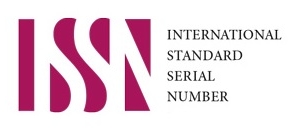1. On the development of a methodology for building air and missile defense systems. Explanation of the investigation mechanism
Organization:
Yangel Yuzhnoye State Design Office, Dnipro, Ukraine
Page: Kosm. teh. Raket. vooruž. 2023 (1); 3-13
DOI: https://doi.org/10.33136/stma2023.01.003
Language: Ukrainian
Annotation: Substantiation of the research tools has been performed as a part of methodology development for the air and missile defense system. The problem under consideration is very complex due to the multifactorial nature of the research object, its qualitative variety and manifold structure, incomplete definition of the problem statement. Furthermore, the ability of modern technologies to produce different arms systems, which are capable of carrying out same class tasks, considerably increases the risk of making not the best decisions. Based on this, as well as taking into account the sharp increase in the cost of weaponry, the considered problem is classified as an optimization one that should be solved through the theory of operations research. In this theory, such task is viewed as a mathematical problem, and mathematical simulation is the basic method of research. The main types of mathematical models, their areas of application have been considered as a part of the analysis. The classification of mathematical models has been indicated according to the scale of reproduced operations, purpose, and goal orientation. Quantitative and qualitative correlation of forces has been accepted as the efficiency criterion, which determines a goal orientation of the model. The problems related to this have been shown. In particular, searching for the compromise between simplicity of the mathematical model and its adequacy to the research object is among these problems. Two of the basic approaches to principles of the military operation model construction and its assessment have been considered. The first is implemented through modeling of the combat operations. The second approach is based on the assumption that different armament types can be compared based on their contribution to the outcome of the operation, and on the possibility to assign «a weighting coefficient» named as a combat potential to each of these types. The modern level of problem solving related to this method has been shown. The reasonability of its application in the considered task, including the definition of forces correlation of the opposing parties, has been substantiated. The basic regulations of the construction concept of the required mathematical model and tools for its research have been formulated based on the analysis results: the assigned problem should be solved by analytical methods through the theory of operations research; the analytical model is the most acceptable conception of the analyzed level of the military operation; the synthesis of the model should be based on the idea of a combat potential. At the same time, it should be taken into account that the known approach to the definition of forces correlation, which uses the combat potential method, has a number of essential limitations, including the methodological ones. Therefore, within the bounds of further research, this approach requires the development both in terms of improving the reliability of the single assessment and in terms of giving the system qualities to the synthesized mathematical model.
Key words: multifunctional system, mathematical model, military unit, combat potential, correlation of forces, defensive sufficiency
Bibliography:
- Korshunov Yu. M. Matematicheskie osnovy kibernetiki. M., 1972. 376 s.
- Pavlovskiy R. I., Karyakin V. V. Ob opyte primeneniya matematicheskih modeley. Voennaya mysl. № 3. S. 54-57.
- Katasonov Yu. V. SShA: voennoe programmirovanie. M., 1972. 228 s.
- Analiz opyta ministerstva oborony SShA po sovershenstvovaniyu systemy plannirovaniya i upravleniya razrabotkami vooruzhenniya. TsIVTI, otchet № 11152 po NIR. M., 1967.
- Sokolov A. Razvitie matemaicheskogo modelirovaniya boevyh deistviy v armii SShA. Zarubezhnoye voennoe obozrenie. № 8. S. 27-34.
- Chuev Yu. V. Issledovanie operatsiy v voennom dele. M., 1970. 256 s.
- Yevstigneev V. N. K voprosu metodologii matematicheskogo modelirovaniya operatsii. Voennaya mysl. № 17. S. 33-41.
- Fendrikov I., Yakovlev V. I. Metody raschetov boevoy effectivnosti vooruzhennia. M., 1971. 224 s.
- Neupukoev F. O podhode k otsenke boevyh vozmozhnostey i boevoy effectivnosti voisk. Voennaya mysl. № 11. S. 70-72.
- AgeevYu. D., Geraskin A. P. K voprosu o povyshenii dostovernosti otsenki sootnosheniya sil protivoborstvuyuschih storon. Voennaya mysl. № 4. S. 54-58.
- Aleshkin A. V. Otsenka i soozmerenie sil voyuuschih storon s uchetom kachestva sredstv porazhenya. Voennaya mysl. № 10. S. 69-76
- Ponomarev O. K. O metodah kolichestvennoy i kachestvennoy otsenki sil storon. Voennaya mysl. № 4. S. 41-46.
- Luzyanin V. P., Elizarov V. S. Podhod k opredeleniyu sostava gruppirovki sil i sredstv oboronnoy dostatochnosti. Voennaya mysl. № 11. S. 25-29.
- SpeshilovL. Ya., Pavlovskiy R. I., Kabysh A. I. K voprosu o kolichestvenno-kachestvennoy otsenke sootnosheniya sil raznorodnyh gruppirovok voisk. Voennaya mysl. № 5.
- . Strelchenko B. I., Ivanov V. A. Nekotoye voprosy otsenki sootnosheniya sil i sredstv v operatsii. Voennaya mysl. № 10. S. 55-61.
- Morozov N. A. O metodologii kachestvennogo analiza bolshih voennyh system. Voennaya mysl. № 7. S. 19-22.
- Terehov A. G. O metodike rascheta sootnosheniya sil v operatsii. Voennaya mysl. № 9. S. 51-57.
- Tsygichko V. A., Stokli F. Metod boevyh potentsialov. Istoria i nastoyaschee. Voennaya mysl. № 4. S. 23-28.
- BoninA. S. Osnovnye polozheniya metodicheskyh podhodov k otsenke boevyh potentsialov i boevyh vozmozhnostey aviatsionnyh formirovaniy. Voennaya mysl. № 1. S. 43-47.
- Bonin A. S., Gorchitsa G. I. O boevyh potentsialah obraztsov VVT, formirovaniy i sootnosheniyuah sil gruppirovok storon. Voennaya mysl. № 4. S. 61-67.
- SereginG. G., Strelkov N., Bobrov V. M. Ob odnom podhode k raschetu znacheniy boevyh potentsialov perspektivnyh sredstv vooruzhenniy. Voennaya mysl. 2005. № 10. S. 32-38. https://doi.org/10.1016/S1097-8690(05)70764-2
- Morozov N. A. Esche raz o boevyh potentsialah. Voennaya mysl. № 9. S. 75-79.
- Naryshkin V. G. O pokazatelyah boevogo potentsiala voinskyh formirovaniy. Voennaya mysl. № 1. S. 68-72.
- Kostin N. A. Metodologicheskiy podhod k opredeleniyu boevyh potentsialov voiskovyh formirovanniy. Voennaya mysl. № 10. S. 44-48
- Ostankov V. I. Obosnovanie boevogo sostava gruppirovok voisk (sil). Voennaya mysl. № 1. S. 23-28.
Full text (PDF) || Content 2023 (1)
Downloads: 69
Abstract views:
2231
Dynamics of article downloads
Dynamics of abstract views
Downloads geography
| Country | City | Downloads |
|---|---|---|
| USA | Ashburn;; Biscoe; Columbus; Columbus; Ashburn; Phoenix; Phoenix; Phoenix; Phoenix; Phoenix; Phoenix; Phoenix; Phoenix; Phoenix; Phoenix; Phoenix; Phoenix; Phoenix; Phoenix; Phoenix; Phoenix; Phoenix; Phoenix; Phoenix; Phoenix; El Monte; El Monte; Ashburn; Ashburn; Ashburn; Ashburn; Mountain View; San Mateo; San Mateo; Ashburn; Ashburn; Ashburn; Ashburn; Ashburn; Pompano Beach; Lakeside; Lakeside; Seattle | 44 |
| Singapore | Singapore; Singapore; Singapore; Singapore; Singapore; Singapore | 6 |
| Germany | Falkenstein; Falkenstein; Frankfurt am Main; Limburg an der Lahn; Falkenstein | 5 |
| Canada | Toronto; Toronto; Toronto; Toronto | 4 |
| Unknown | ; | 2 |
| Ukraine | Dnipro; Kremenchuk | 2 |
| Vietnam | 1 | |
| Brazil | Montes Claros | 1 |
| France | Paris | 1 |
| Japan | 1 | |
| China | 1 | |
| Netherlands | Amsterdam | 1 |
Visits:2231



